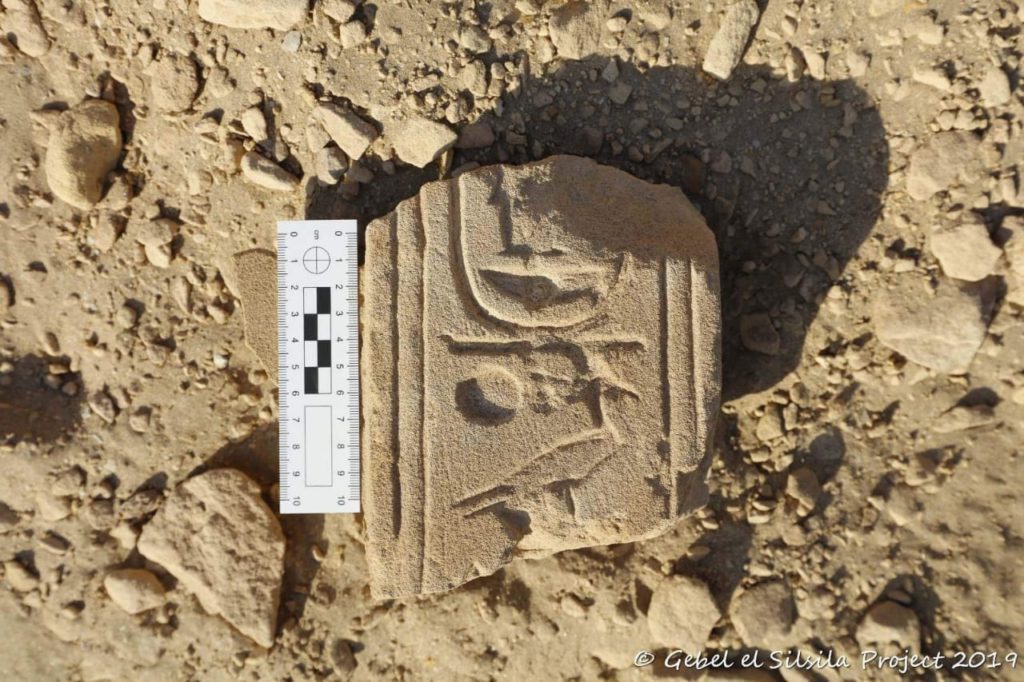By Muhammed Aladdin
During excavation efforts at the Gebel El-Silsila archaeological site in Aswan, the Swedish-Egyptian mission, led by Maria Nilsson and John Ward from Lund University, came across an ancient Egyptian, New Kingdom sandstone workshop with several intact sculptures.
The finding has regained immediate international recognition as it opened the door to understanding how the artisans of antiquity decorated temples and burial sites worked.

Secretary-General of the Supreme Council of Antiquities, Mostafa Waziri, has stated that archaeologists of Gebel El-Silsila mission discovered a number of precious artifacts. Those include a sizable criosphinx, a ram-headed sphinx, carved in a similar style to the criosphinxes south of Koshnu Temple at Karnak. The newly-discovered relic dates back to the time of Amenhotep III of the 18th Dynasty.
The unearthed criosphinx measures 5 meters in length, 1.5 meters in width, and 3.5 meters in height. A smaller criosphinx, the work of a probably a young apprentice still learning, has been discovered as well.
Archaeologists have suggested that the two uncovered sculptures have been preserved in rough-cut and had been set for transportation. However, it seems that a fracture in the larger statue brought the whole operation to a halt. The two were left forgotten at the workshop, until the time of the Romans, who built a quarry that, with time, buried the two sculptures underground.

Embedded in the walls of the workshop, the mission has also discovered a rough-cut uraeus, a coiled cobra, destined to crown the head of the larger criosphinx. Furthermore, a blank, round-top Stella was also uncovered.
According to the statement of Director General of the Aswan and Nubia Antiquities, Abel-Moniem Saeed, hundreds of hieroglyphic fragments that belonged to a destroyed Naos of Amenhotep III, fragments of a falcon sculpture, as well as parts of an obelisk with an intact pyramidion were retrieved.

Prior to the discovery, the Egyptology community has long thought that the site at Gebel El-Silsila has been a Roman quarry. However, the recent findings shed light on the presence of ancient Egyptian artisans predating the existence of Rome.
The workshop shows the different architectural elements of ancient Egypt, and how their use helped bring temples to greatness.



